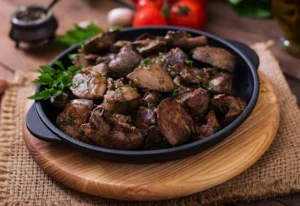
Chất dinh dưỡng là chìa khóa cho sức khỏe của chúng ta và đặc biệt quan trọng đối với sự phát triển của xương và mức năng lượng cao. Mặc dù tất cả chúng ta đều cần những chất dinh dưỡng giống nhau, nhưng mỗi người lại cần lượng chất dinh dưỡng khác nhau tùy thuộc vào độ tuổi, sự phát triển và hoạt động. Chất dinh dưỡng thường có thể được chia thành hai loại: chất dinh dưỡng đa lượng—protein, chất béo và carbohydrate—và chất dinh dưỡng vi lượng—vitamin, khoáng chất và các yếu tố đồng hành. Vì cả chất dinh dưỡng đa lượng và vi lượng đều có chức năng quan trọng trong cơ thể, hãy đảm bảo rằng bạn có được sự cân bằng phù hợp giữa các chất dinh dưỡng để có sức khỏe và tinh thần tối ưu. Trẻ em đặc biệt cần những chất dinh dưỡng phù hợp trong chế độ ăn uống của mình để giúp chúng đáp ứng nhu cầu tăng lên từ hoạt động thể chất, sự tăng trưởng đột biến và học tập.
Sau đây là 6 chất dinh dưỡng hàng đầu giúp con bạn khỏe mạnh trong mọi giai đoạn phát triển:
1. Chất đạm
Protein, khối xây dựng chính của mọi tế bào trong cơ thể chúng ta, là thành phần thiết yếu cho sự sống. Có những protein tham gia vào việc giúp cơ thể trẻ phân hủy thức ăn thành năng lượng, chống lại nhiễm trùng và vận chuyển oxy trong máu. Có 20 loại axit amin đơn phân, "cơ bản", từ đó chúng ta tổng hợp các protein giúp phát triển và phục hồi cơ thể. 9 loại được coi là "thiết yếu" vì cơ thể chúng ta không thể tự tạo ra chúng. Protein động vật được coi là nguồn protein hoàn chỉnh vì nó chứa tất cả các loại amino thiết yếu và thiết yếu có điều kiện, cộng với nó chứa các loại vitamin và khoáng chất ở dạng có khả dụng sinh học cao. Thịt nội tạng và động vật có vỏ đặc biệt giàu chất dinh dưỡng thiết yếu. Hãy bắt đầu sớm với thịt nội tạng để trẻ có thể nếm thử. Ở nhiều nền văn hóa, gan là "thức ăn đầu tiên" cho trẻ sơ sinh khi chúng bắt đầu ăn dặm. Điều quan trọng cần lưu ý là bạn cần ăn mỡ cùng với thịt, vì vậy đừng cắt bỏ mỡ và chắc chắn không để ý đến lời vô nghĩa "ăn protein nạc".
Đối với thực phẩm từ thực vật, rất ít loại chứa tất cả 9 loại axit amin thiết yếu và một số axit amin sẽ không đủ, ví dụ như methionine và cysteine. Nhiều loại thực phẩm protein thực vật được chế biến rất nhiều với dầu và hương liệu bổ sung, và protein thực vật thiếu hầu hết các chất dinh dưỡng và cofactors mà protein động vật có. Ngoài ra, khả dụng sinh học của protein thực vật thấp hơn so với thực phẩm từ động vật, vì vậy bạn có thể kết hợp gạo và đậu để tăng lượng axit amin thiết yếu, nhưng chúng sẽ chỉ bằng một nửa khả dụng sinh học và do đó bạn sẽ phải ăn ít nhất gấp đôi lượng calo.
Ngoài ra, thực phẩm từ thực vật chứa nhiều hóa chất phòng vệ ức chế quá trình tiêu hóa/hấp thụ chất dinh dưỡng. Đậu phụ và tempeh có hàm lượng protein cao nhưng chỉ nên sử dụng thỉnh thoảng hoặc làm gia vị, như ở châu Á. Một số ít nền văn hóa thực sự ăn chay trên thế giới nuôi con mà không ăn thịt và cá gặp nhiều vấn đề về sức khỏe hơn, thậm chí là chậm phát triển và phát triển não bộ. Các protein như carnitine, creatine, taurine, glycine và carnosine được tạo ra trong cơ thể chúng ta nhưng thường không đạt đến mức chúng ta cần, vì vậy điều quan trọng là phải lấy chúng từ thực phẩm. Các protein này rất cần thiết cho chức năng não khỏe mạnh, quá trình trao đổi chất, cơ, tiêu hóa, v.v. và chúng không có trong bất kỳ thực phẩm từ thực vật nào. Nghiên cứu đã chỉ ra rằng thực phẩm từ động vật được khuyên dùng làm cơ sở cho chế độ ăn của trẻ em, chủ yếu là vì chúng giàu chất dinh dưỡng sinh học mà thực phẩm từ thực vật lại thiếu hoặc ít. Các nền văn hóa ăn các loại thực phẩm như gạo và đậu thường thêm thịt và/hoặc nước dùng xương vào món ăn.
- Thịt đỏ
- Gia cầm
- Cá
- Trứng
- Nội tạng động vật – gan, thận, tim, v.v.
- Sữa nguyên chất và phô mai
- Cơm và đậu (thường có thêm protein động vật)

2. Chất béo
Chất béo và cholesterol là những chất thiết yếu cho sự sống và có trong mọi màng tế bào. Chúng có vai trò chính trong việc hỗ trợ sức khỏe, độ ẩm và phục hồi của da; hỗ trợ phản ứng miễn dịch; và là nguồn nhiên liệu, đặc biệt là trong khi ngủ. Cholesterol là phân tử cơ bản cho các hormone steroid và vitamin D của chúng ta. Mặc dù chúng ta có thể tổng hợp chất béo và cholesterol trong cơ thể, nhưng cần phải có chất béo trong chế độ ăn uống của bạn để cơ thể hấp thụ các vitamin tan trong chất béo, D, E, K và A, cộng với chúng ta chỉ tạo ra khoảng 80% cholesterol mà chúng ta cần mỗi ngày. Nghiên cứu đã chỉ ra rằng trẻ em ăn chế độ ăn ít chất béo có nhiều khả năng trở thành người lớn béo phì.
Axit béo omega-3 và -6 không được tạo ra trong cơ thể chúng ta, vì vậy chúng ta phải lấy chúng từ chế độ ăn uống của mình. Chất béo động vật lành mạnh, bao gồm thịt đỏ, nhưng đặc biệt là cá, chứa các axit béo omega-3 thiết yếu, DHA và EPA, rất quan trọng cho sức khỏe, sự phát triển và tăng trưởng của não. Dầu thực vật được tinh chế cao và tỷ lệ omega-6 so với omega-3 quá cao. Các loại hạt và hạt giống chứa tiền chất của omega-3 có thể sử dụng được, DHA và EPA, được gọi là axit alpha-linolenic, nhưng thật không may, quá trình chuyển đổi thành EPA và đặc biệt là DHA bị hạn chế ở hầu hết chúng ta. Đây là lý do tại sao trẻ em cần tiêu thụ chất béo động vật và tại sao các nền văn hóa truyền thống ưu tiên thực phẩm từ động vật cho trẻ nhỏ của họ.
- Chất béo động vật – thịt mỡ, bao gồm cả cá
- Chất béo từ sữa – Bơ, bơ ghee, sữa chua nguyên kem, phô mai
- Lòng đỏ trứng
- Quả bơ
- Dầu ô liu
- Dầu dừa
- Một ít hạt và hạt giống (tốt nhất là đã ngâm và "kích hoạt")
3. Carbohydrate
Carbohydrate, dưới dạng glucose, được coi là nguồn năng lượng chính cho cơ thể—glucose rất cần thiết cho não hoạt động tốt, và một số tế bào trong cơ thể, ví dụ như tế bào hồng cầu, chỉ có thể sử dụng glucose để tạo năng lượng. Cơ thể rất giỏi trong việc tạo ra glucose, nhưng tốt hơn hết là bạn nên bổ sung tất cả những thứ cơ thể cần trong chế độ ăn uống của mình, bất cứ khi nào có thể. Tuy nhiên, trẻ em cần có carbohydrate trong chế độ ăn uống của mình; nếu không, chúng có thể gặp các vấn đề về tăng trưởng. Chế độ ăn ketogenic rất phổ biến hiện nay; tuy nhiên, trẻ em áp dụng chế độ ăn này vì lý do điều trị sẽ gặp các vấn đề về còi cọc. Carbohydrate hỗ trợ hormone tâm trạng và giúp trẻ sử dụng chất béo và protein để xây dựng và sửa chữa mô. Carbohydrate có nhiều dạng, bao gồm rau củ (ví dụ như khoai lang, khoai tây và cà rốt) và trái cây và rau củ. Ngũ cốc nguyên hạt không phải là chất thiết yếu trong chế độ ăn uống (tất cả các chất dinh dưỡng thiết yếu đều có thể có được thông qua chế độ ăn có nguồn gốc từ động vật với trái cây và củ) nhưng có thể sử dụng nếu được chế biến đúng cách thông qua việc ngâm, nảy mầm, lên men và nấu chín. Điều quan trọng nhất cần nhớ là hạn chế hoặc bỏ các loại thực phẩm và carbohydrate đã qua chế biến kỹ, ngoại trừ các loại thực phẩm carbohydrate tinh chế truyền thống như gạo trắng và mì ống truyền thống.
- bí ngô
- Kumara
- Khoai tây
- Cà rốt
- Hoa quả
- Rau
- Cơm
- Cháo ngâm/lên men
4. Canxi

Canxi rất cần thiết cho việc xây dựng xương chắc khỏe và răng khỏe mạnh. Nhưng bạn có biết rằng canxi cũng quan trọng đối với quá trình sản xuất năng lượng, điều hòa hệ thống miễn dịch và chức năng thần kinh và tim không? Một lần nữa, nguồn canxi tốt nhất là thực phẩm động vật vì thực phẩm thực vật chứa các hợp chất có thể ức chế sự hấp thụ canxi và các khoáng chất khác. Khả dụng sinh học của canxi trong hạt có thể được tăng lên bằng các phương pháp chế biến thực phẩm thực vật truyền thống (ngâm/kích hoạt), nhưng không nên dựa vào các phương pháp này để đáp ứng phần lớn nhu cầu canxi của trẻ. Hãy chọn các sản phẩm từ sữa đã qua chế biến càng ít càng tốt… trừ khi trẻ bị dị ứng với sữa hoặc không phù hợp với văn hóa.
- Sữa động vật chưa qua chế biến
- Phô mai và/hoặc phô mai kem
- Sữa chua và/hoặc kefir
- Cá hồi đóng hộp có xương
- Bột xương
- Vỏ trứng đã tiệt trùng và nghiền thành bột (thực phẩm chức năng bổ sung)
- Hạt mè hoạt tính
5. Sắt
Cần thiết cho máu khỏe mạnh, sắt hỗ trợ chức năng tế bào bình thường và vận chuyển oxy vào các tế bào trên khắp cơ thể để hỗ trợ mức năng lượng. Sắt cũng cần thiết cho chức năng não và tâm trạng khỏe mạnh. Sắt có hai dạng: sắt hem và sắt không hem. Sắt hem có trong thực phẩm động vật, đặc biệt là thịt nội tạng—gan là nguồn giàu nhất—và do đó nên ưu tiên thực phẩm động vật. Sắt không hem có trong thực vật, hấp thụ kém và cần vitamin C trong bữa ăn.
- Thịt nội tạng
- Thịt đỏ
- Động vật có vỏ
- Cá, thịt lợn, gia cầm
- Rau lá xanh đậm (hấp thụ kém)
6. Vitamin C
Một chất dinh dưỡng thiết yếu, Vitamin C không thể được lưu trữ trong cơ thể và phải được tiêu thụ trong chế độ ăn uống. Không chỉ quan trọng đối với sức khỏe miễn dịch; Vitamin C giúp cơ thể chữa lành vết thương và làm giảm sự phát triển của vết bầm tím bằng cách tăng cường thành mạch máu. Vitamin C giúp giữ cho nướu và răng khỏe mạnh và hỗ trợ sự phát triển của xương chắc khỏe.
- Trái cây họ cam quýt
- Kiwi – đặc biệt là vàng
- dâu tây
- nho đen
- Ớt đỏ
- Súp lơ xanh
- Thịt nội tạng
Chất dinh dưỡng bổ sung
Có nhiều loại vitamin và khoáng chất thiết yếu khác—ví dụ như vitamin tan trong chất béo A, D3, K2 và E—rất quan trọng cho sự phát triển răng, xương và cấu trúc khuôn mặt của trẻ, tất cả đều có ý nghĩa đối với sức khỏe của trẻ khi trưởng thành. Các khoáng chất thiết yếu khác cho sự tăng trưởng và phát triển, chẳng hạn như magiê, iốt (rất quan trọng ở tuổi dậy thì), kali, phốt pho, đồng và kẽm, có nhiều khả dụng sinh học hơn trong thực phẩm động vật, nhưng chúng có thể thu được bằng cách chế biến thực phẩm thực vật theo cách truyền thống. Cách chế biến truyền thống các loại thực phẩm này được trình bày chi tiết tại Quỹ Weston A. Price trang web. Nếu bạn và gia đình tập trung vào…
- thức ăn động vật và chất béo của chúng
- carbohydrate dễ tiêu hóa như trái cây, củ và rau mà bọn trẻ thích
- chỉ sử dụng thực phẩm nguyên chất
- học cách chế biến và chuẩn bị thực phẩm từ thực vật theo cách truyền thống
- và giảm thiểu hoặc loại bỏ đồ ăn vặt và thực phẩm chế biến sẵn
…con bạn sẽ có đủ chất dinh dưỡng cần thiết để phát triển và học tập. Dạy trẻ về tầm quan trọng của dinh dưỡng sẽ giúp trẻ phát triển thói quen tốt cho tương lai.
